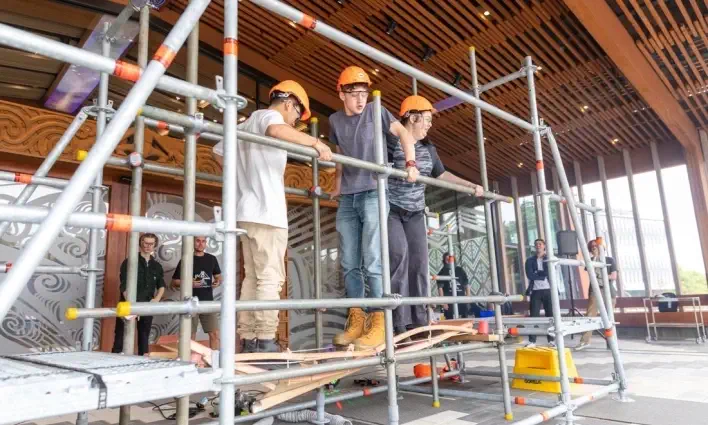Civil Engineering

Why study Civil Engineering?
Civil engineers design and construct the fundamental requirements of society in key areas such as earthquake proofing, energy recovery, water/waste management, power generation, road networks, transport management, agriculture and forestry development.
As a Civil Engineering graduate from the University of Waikato you will have the practical and theoretical skills to help create, improve and protect our built and natural environments. You will be ready to meet the strong demand for your skills both in New Zealand and around the world.
You will gain the knowledge and expertise required to work as a professional civil engineer including skills in the following areas:
- Construction Engineering
- Structural Analysis
- Geotechnics and Geotechnical Engineering
- Water Engineering
- Mathematics, Computing and Modelling
- Project Management
- Structural Design
- Structural Dynamics and Earthquake Design
- Transport Engineering
- Environmental Engineering
An important part of the programme at the University of Waikato is supported work placements into relevant industries. This gives you the opportunity for paid work experience while exploring the field of Civil Engineering you could choose for your career, i.e. structural, water resources, transport, geotechnical or construction engineering.
You'll work on major research design projects, creating products with commercial applications, which are then showcased at our annual Engineering Design Show. Importantly, there is also a focus on developing well-honed communication skills that are such a vital part of the profession.
Career opportunities
- Civil engineer
- Construction Engineer and Manager
- Geotechnical Engineer
- Structural Engineer
- Transport Engineer
- Water Engineer
Hamilton, Tauranga
Study Civil Engineering in these qualifications
Accreditation
The Civil Engineering programme is fully accredited under the Washington Accord.
Practical experience
Work placements are a major feature of the Civil Engineering programme and you will complete 800 hours of relevant work experience during your degree.
Our Work-Integrated Learning team actively seeks and oversees your work placement, ensuring a good fit for your area of study and career goals, and supporting you throughout your work experience.
By the time you graduate you will have the credibility of paid experience to take with you as you start your career.
Students can work in specialised laboratories including the Large Scale Lab complex that features a suite of workshops and laboratories dedicated to engineering teaching and research, such as 3D printing, a mechanical workshop and computer labs with engineering design software.
Build a successful career
Civil engineers work in many fields, including structures and infrastructures, dams, bridges, gas and water supply systems, sewerage systems, transportation systems and roads and construction sector. These crucial facilities provide people with a reliable, safe, sustainable and modern environment to live in.